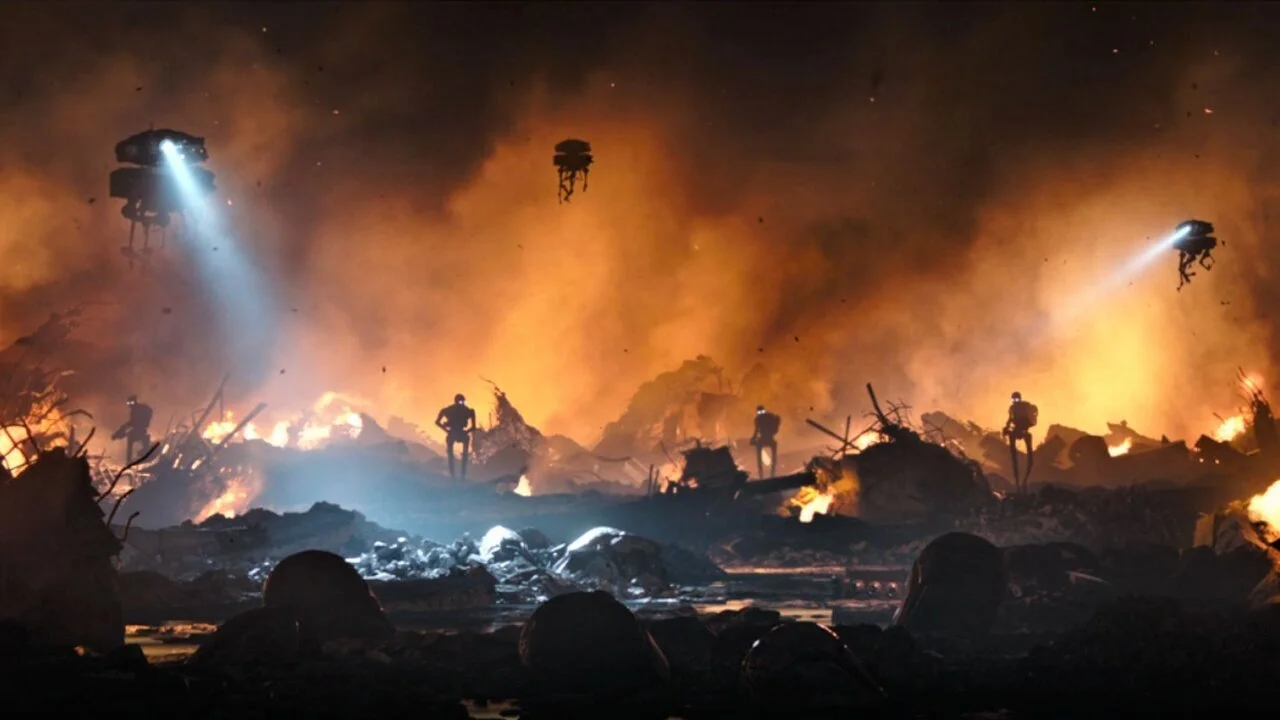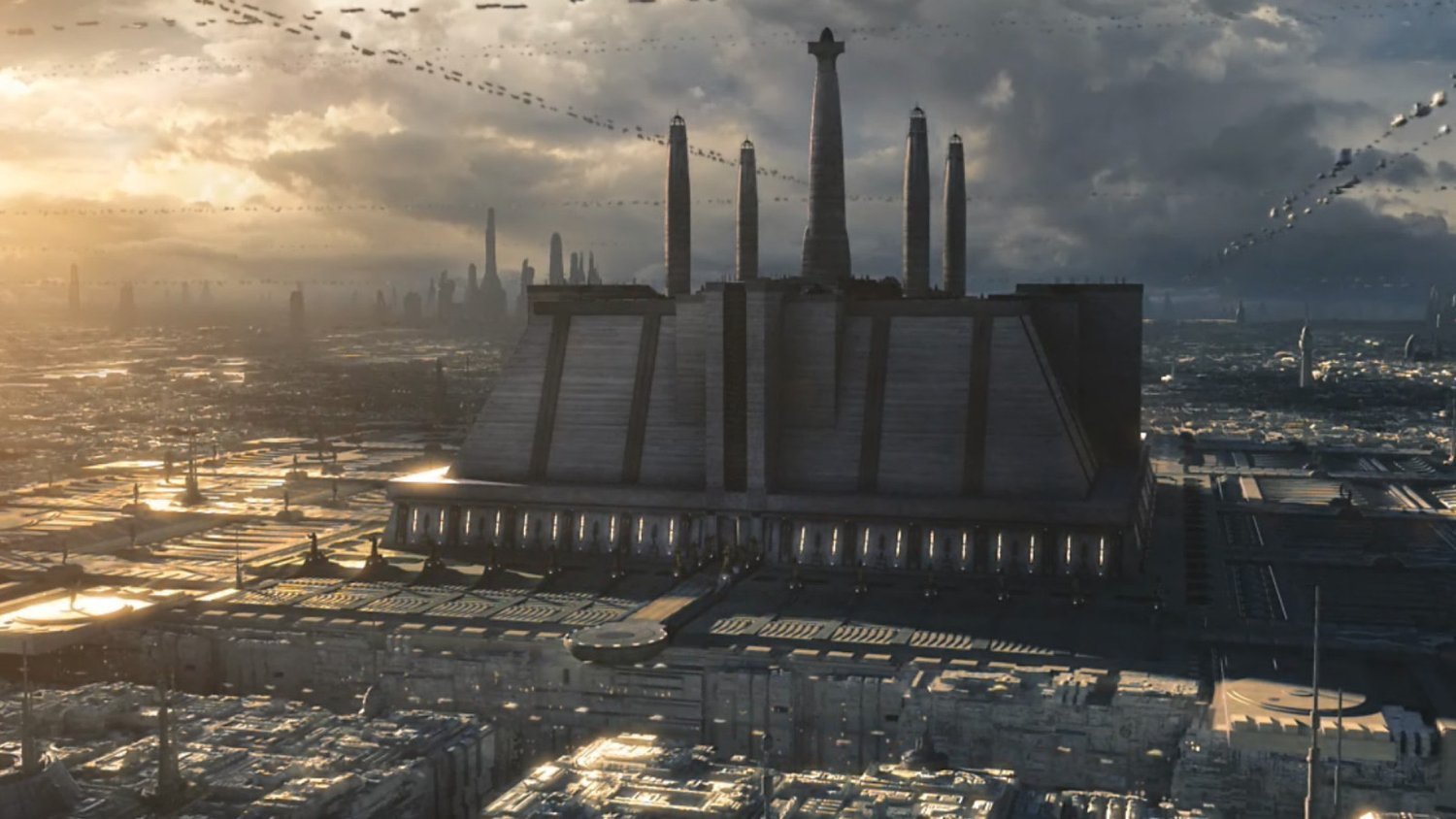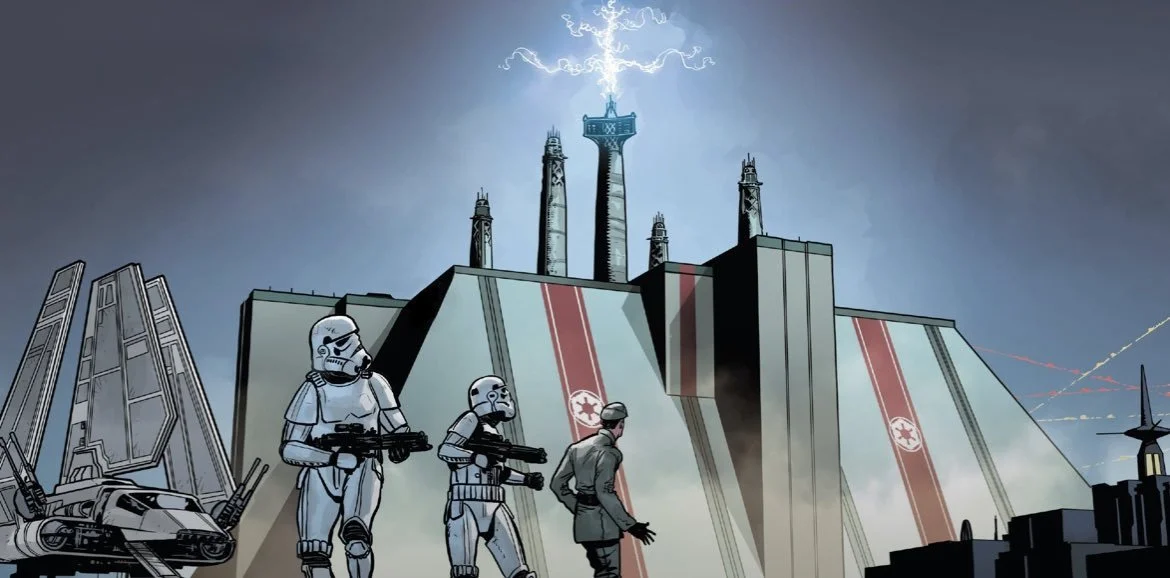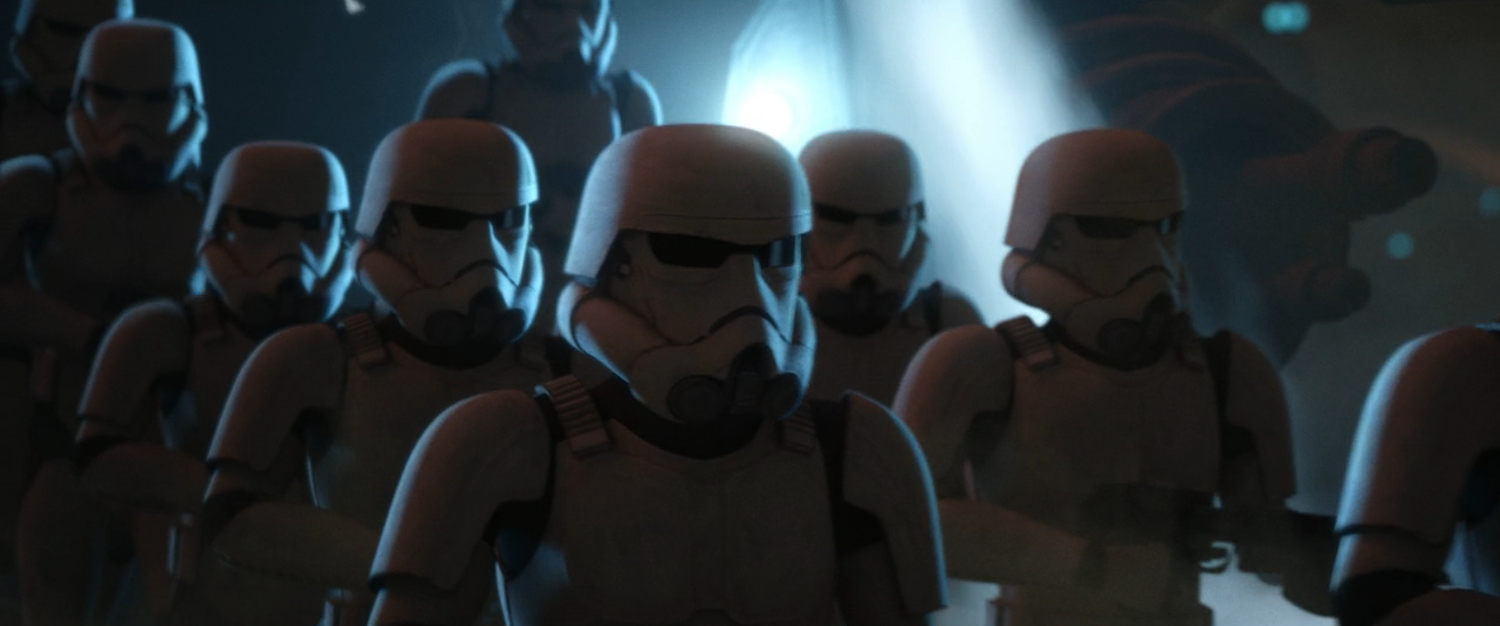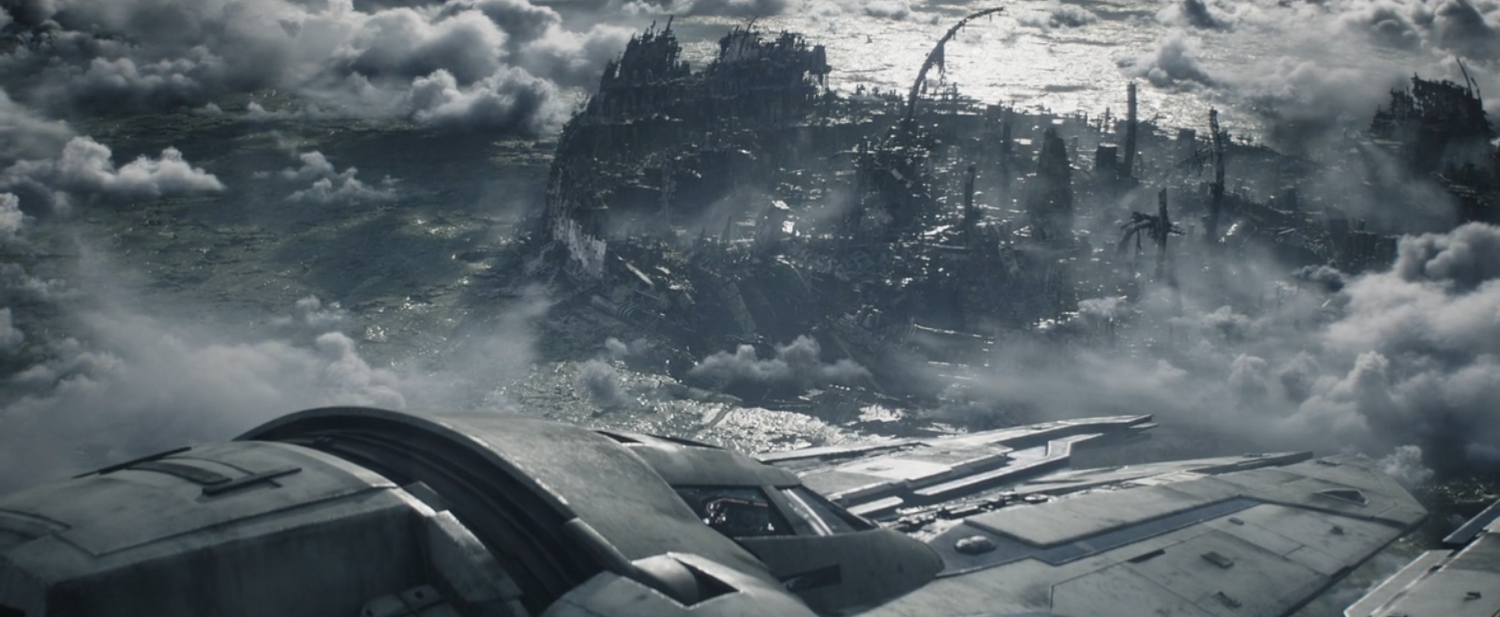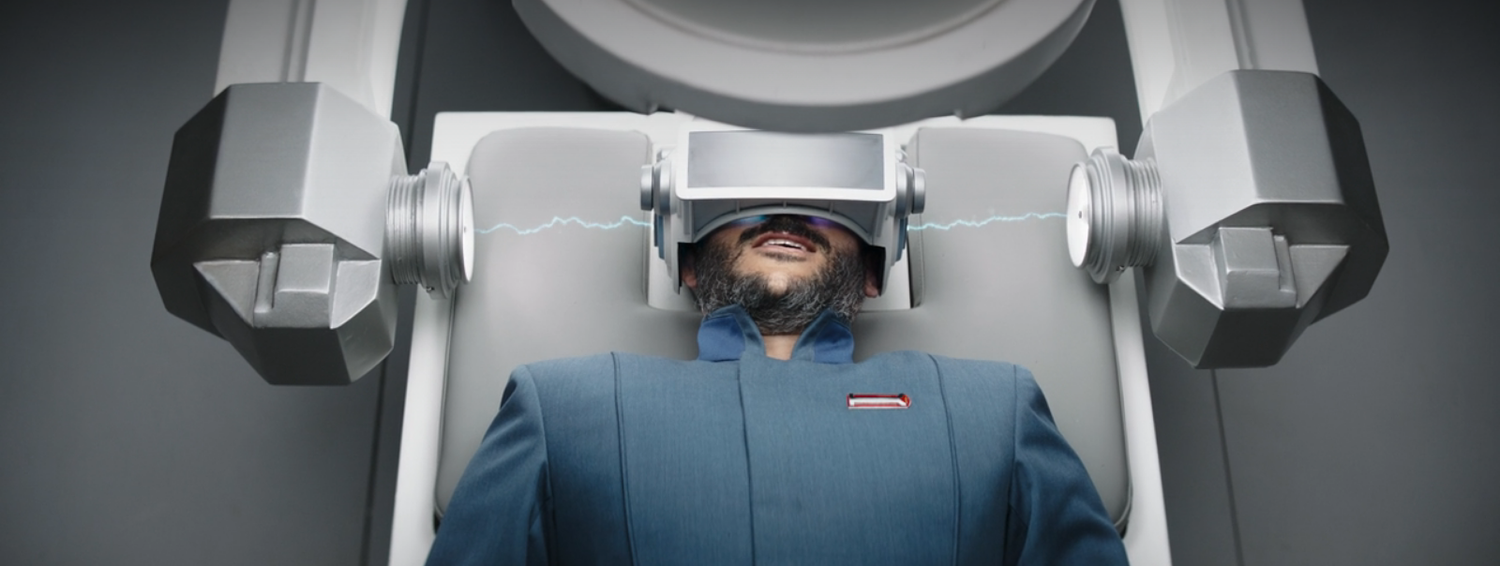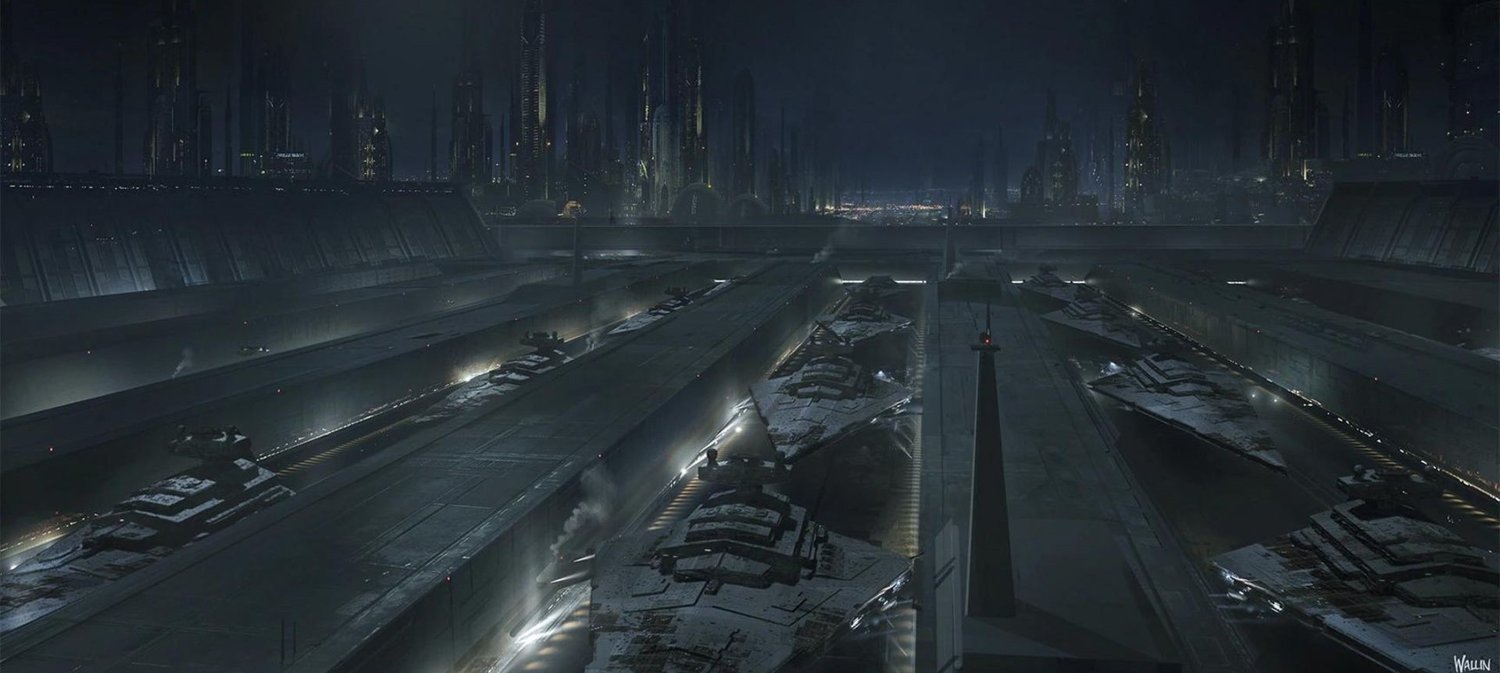The Re-Writing Of History In Recent 'Star Wars' Shows
Image Source: Disney+
Every major historical event has winners and losers. Of course, this is a simplistic way to see the world; one side (the one who comes out on top) creates their own narrative around what happened. More often than not, this new rhetoric shapes a new reality in which the victor structures society, politics, and the economy with its views of the world. This has been a common element throughout time.
For example, the French Revolution of 1789 removed the powerful Bourbon monarchy from the throne. During the process, the bourgeois emerged as the main actor in France in the late 1700s. Society was heavily transformed during the following century based on that group’s views and what they considered right and wrong. The decaying monarchy structure had been replaced by one focused on the future and progress in general. This is not plain and simple; sometimes, there are also spurs of resistance that try to come out and re-take the space they lost.
RELATED:
This is not restricted to the real world. Movies are made by people, and these people are raised in certain classes, have access to different resources, and consequently will think differently than one another. Thus, movies mirror what happens in our reality: relations, wars, and politics are often based on what we have seen happen in history. Star Wars is no exception. The rise of the Empire through Order 66 and its fall 20 years later, the destruction of Mandalore and its people, and the replacement of clone troopers are good examples of how history was transformed by the side that won.
The Jedi Temple: A Turbulent Transition
Image Source: Looper
For thousands of years, this place had been the home to the keepers of peace in the galaxy. There, thousands of Jedi younglings, Padawans, Knights, and Masters lived for many generations. The place chosen to build the Temple was problematic; it was constructed on top of a Sith shrine on the city planet of Coruscant, the very center of the galaxy. The Sith fell, and the Jedi rose to power. While the Jedi’s numbers multiplied, establishing their organization, Bane’s rule of two kept the Sith hidden from the light.
They were able to grow in the shadows. Sheev Palpatine, apprentice to Darth Plagueis, did exactly that. He manipulated politics to his advantage, and when the time came, seized power. The Clone Wars brought the end of the old Jedi Order and the rise of the newly-formed Galactic Empire. Order 66 was the cataclysm of that generation. Recent productions of Star Wars, mainly the so-called “Filoniverse” (Clone Wars, Rebels, Bad Batch, and The Mandalorian) touched upon this topic, playing with fans’ emotions every time it shows up on their screens.
Image Source: Star Wars Holocron
By purging the Jedi throughout the galaxy, Palpatine took control of one extremely important location: their Temple. Before its demolition and repurposing, it was a beacon for the Dark Side, calling for vengeance. Palpatine chose a perfect place to create his new Empire, one that represented not only the defeat of the Jedi, but also the return of the Sith to power. He made the Temple his own palace, a building no more dedicated to the promulgation of peace, but to authoritarian control and a representation of who he truly was.
A New Face for the Empire’s Military
Image Source: Disney+
Order 66 and the rise of Palpatine as Emperor provoked a considerable number of changes to the galaxy. One of them was the relocation of military resources through the Defense Recruitment Bill, a piece of legislation aimed at replacing clones. Created by Admiral Rampart and ultimately supported by the Emperor himself, it had the goal of making stormtroopers the new soldiers who would represent the Empire and act as its armed hand. Coercion and control at its best, but with cool new armor. The bill completely disregarded the clones’ necessities and what would become of them after the war, especially with the advanced aging.
This act, though extremely authoritarian, did not meet great resistance among the people. It was time for a new chapter: no more galactic war. Transitioning clones from the war to regular life is a topic widely covered in the Republic Commando novels, and now it is becoming an integral part of The Bad Batch’s plot. By teaming up with Rex, our favorite clone team joined the bigger fight. The Batch’s connections are somewhat limited for now, but knowing Rex opens things up considerably.
Image Source: Disney+
Echo joined Rex in his struggle to help fellow clones. In Season 2, Episode 14 of the Bad Batch, we can see Echo, now joined by former commando Gregor and two other clones, Fireball and Nemec. They were in the middle of an important rescue mission: get Captain Howzer back. But there are other ramifications of the shifting landscape: Crosshair’s recent realization that the Empire considers him disposable also flipped an important switch. Imprisoned inside Mount Tantiss’ facility, he signaled Hunter & Co. for help. Time to come home, because the clone rebellion is at full steam.
The Destruction of Mandalore and the Redemption of Bo-Katan
Image Source: Disney+
“This was once a beautiful civilization. My family ruled it all. Now it's a tomb,” said Bo-Katan Kryze in the newest season of The Mandalorian. All Mandalorians are branded, but Bo-Katan stands out. Their symbolic home planet, Mandalore, was completely destroyed by Imperial bombers and K2 security droids, just like those seen in Andor and Rogue One. Mandalorians had been, before the Night of a Thousand Tears, fighting each other and the rest of the galaxy for a long time. The world’s surface had become a ruin, with few spots remaining intact. The capital city, Sundari, which most people lived in, was completely covered in a metal dome to protect itself from conflicts and the harsh climate.
After siding with former Padawan Ahsoka Tano to retake Mandalore from Darth Maul and the Death Watch, Bo-Katan took over as Mand’alor. Her reign was not long; she was deposed during the rise of the Empire, only returning years later to claim the throne once again. In the final seasons of Rebels, Bo-Katan emerged as the leader, being given the Darksaber from Sabine and Ursa Wren. Bo-Katan held a lot of weight on her shoulders from these experiences as a leader. After organizing a stronger opposition to the Empire, their home was heavily bombed until it became crystalized. Once again, Bo-Katan fled to her family’s castle. Another failure for her.
Image Source: Disney+
Interested in controlling beskar, a nearly indestructible metal that can withstand both blaster bolts and lightsabers, the Empire decimated the planet. Many Mandalorians were killed in the process, thus erasing an important part of the galaxy. Or so they thought; during this season of The Mandalorian, the myth of Mandalore being uninhabitable was broken. Din Djarin, along with Bo-Katan, proved this, bathing themselves in the waters below the mines. Now that she is redeemed, history is being rewritten in front of our eyes. What was once considered lost forever can be found again. Now wearing the mythosaur’s emblem on her right shoulder, she may try to tame the beast and ride it, strengthening her image as Mand’alor. Maybe the third time is the charm?
Removing the Empire from People’s Minds
Image Source: Disney+
The Mandalorian, in its first season, introduced Dr. Penn Pershing (played by Omid Abtahi), a scientist who worked for Moff Gideon’s Imperial remnants. He was one of the leading cloning engineers responsible for continuing what the Empire had started in Mount Tantiss. Bad Batch explores this much more, showing that the Zillo beast was cloned during the war and was intended for use as a resource to develop better technology. This plotline in both Bad Batch and Mandalorian is likely setting up the Palpatine clone situation we have seen in the sequels, mainly Episode IX.
Nonetheless, Dr. Pershing, along with a few others, joined the New Republic’s amnesty program. They received asylum from possible Imperial retaliation and were rehabilitated from their former ideological alliances. We see Dr. Pershing in the Coruscant opera house, last seen in Revenge Of The Sith, giving a speech about the turns his life took.
Image Source: Disney+
“The Amnesty Program saved my life. There are many of us who had no choice in working for the Empire, but now, the New Republic has given us a second chance. So thank you. I believe that pursuit of knowledge is the most noble thing someone can do. Sadly, my research was twisted into something cruel and inhumane, at the behest of a desperate individual intent on using cloning technology to secure more power for himself. But despite the shameful work of my past, I now hope to help the New Republic in whatever way I can. Though that work is now behind me, and I regret what I did, I assure you that my original intentions were good.” - Dr. Penn Pershing
While trying to retrieve cloning equipment with Elia Kane (Katy M. O’Brian) to continue his research, Dr. Pershing was caught by New Republic police. He was set up from the beginning by Kane, who was revealed to be a double agent for Moff Gideon. He was sent to be rehabilitated by a mind-erasing machine, which will make him forget about the Empire. This project is both interesting and extremely problematic. The New Republic, while trying to assert itself, is making people forget—by force—what happened previous to its establishment. History is written by those who win. Once you are at the top, the path to be followed by others is the one you choose.
Image Source: Star Wars Concept Art Gallery
This was not the focus of “The Convert”, but what happened to Star Destroyers and the Rebel Alliance fleet is also important. While working on his new, bureaucratic soul-eating job, Dr. Pershing talks to another employee about the data they are handling. This data has to be processed because it involves the old starships. The New Republic is putting all of what happened in the past and forgetting about it, decommission everything that reminds people of the turbulent times they left behind.
This tells us what the New Republic government is. This episode is a setup for the failure and lack of popularity they had during the rise of the First Order. They lacked the organization and public support to deploy their forces and assert control throughout the galaxy. Characters like Captain Carson Teva (played by Paul Sun-Hyung Lee) are on the alert for possible threats to the newly-established government, but bureaucracy is getting in their way. While the Empire grows again, the so-called “good guys” have their hands tied.
Conclusions
Overall, recent productions of both animated and live-action Star Wars have hit the nail on the head. While Disney gradually understands their public better, the content they put out will also improve. Of course, there are always different goals for different series, but it seems The Mandalorian and The Bad Batch are being used to set up important plots in future productions. The rise of the Empire through Order 66 and the mass removal of clones, the current failures of the New Republic, and the fight for control—both in secrecy and in open combat—are part of these processes. The bombing of Mandalore was a show of force. They rebelled with Bo-Katan as their leader, and everything (her people, planet, and reign) were taken from her. Where there’s tyranny, there will also be resistance. The tighter a grip is, the more will slip through the cracks.
READ NEXT:
Sources: TV Show Transcripts, IMDB

